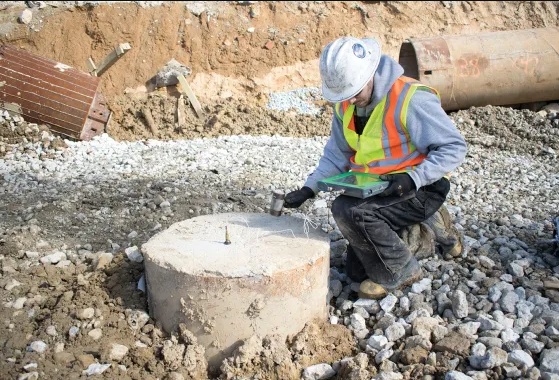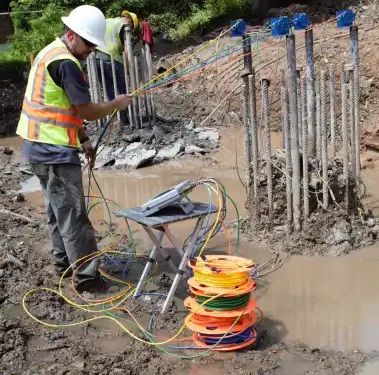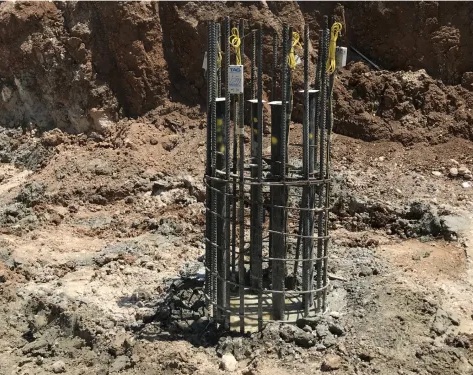A Pile integrity test (PIT) is a method to check the quality of the integrity of piles. It is a quality assessment test of piles. According to ASTM D5882, pile integrity comprises the material’s physical dimension, continuity, and consistency. The physical dimension includes the length and the cross-section of the pile, while the continuity of the pile refers to voids or serious cracks.
A foundation is known as ‘piled’ when its depth is more than three times its width. A Pile foundation is a deep foundation. It is constructed by long, slender, columns typically made from steel or reinforced concrete.
superstructure members such as beams and columns can be checked by visual inspection, dimension checks, etc. It is difficult to test the pile foundation after placing. Once the pile elements are buried underground, there is no choice to conduct quality control and assurance. Only the pile head is the accessible portion to undergo inspection and testing.
To tackle this problem, various reliable and cost-effective methods were developed to assess the quality and integrity of pile elements, one such method is the pile integrity test.
Table of Contents
Types of Pile Integrity Test
There are various types of pile integrity tests depending on the pile dimension, type of pile, and the soil condition.
- Low-strain pile integrity test
- Crosshole sonic logging
- Thermal integrity test
1. Low-strain pile integrity test
A low-strain pile integrity test is the most commonly used non-destructive testing method to evaluate the integrity of pile elements.

This method uses a high-precision sensor to record the pile head’s response to an external force. The transducer is mounted on the file head during the test procedure. The transducer used may be a speed sensor or an accelerator.
This type of test method can utilized the pulse-echo technique (PEM)/sonic-echo (SE) technique and impulse response (IR)/transient response procedures to calculate acceleration and the source of information.
A low strain pile integrity test determines:
- Discontinuity of piles in the form of voids and cracks
- Changes in pile cross-section, such like necking or bulging.
- pile depth
- Consistency of pile material
This method does not give information about the bearing capacity of the pile and cannot be performed over pile caps. In addition, the test is inefficient when performed on piles of various cross-sections.
2. Crosshole sonic logging
This test provides information about the uniformity and integrity of the concrete. Vertical holes are created using pipes during pile construction (minimum 2 piles are created). During the test, the tube is filled with water. The transducer of the sonic emitter is located at the bottom of the pipe (1) and the transducer that receives the sound waves is at the bottom of the tube (2). Both transducers rise at the same rate.
This test analyzes the signal and creates the integrity of a profile called an ultrasound profile. Testing is performed according to ASTM D6760.

This method determines the location and size of the defect. It can be done on large diameter piles. Pipe installation during pile construction is a complex process. It is also expensive to record and analyze data.
3. Thermal integrity test
Thermal Integrity Profiling (TIP) determines the integrity of piles by evaluating the temperature change of cement paste in concrete. Testing can be carried out on a wide range of pile foundations such micro piles, bored piles, drilled shafts, augured cast-in-place piles, etc..
Thermal integrity profiling tests record temperature changes and history over the curing period of the concrete. The recorded temperature is related to the hardening and integrity of the foundation.

